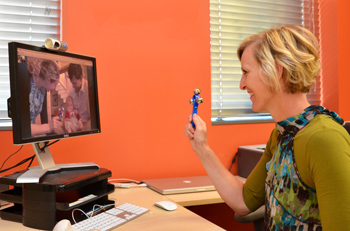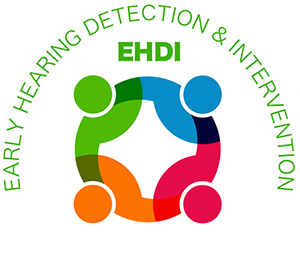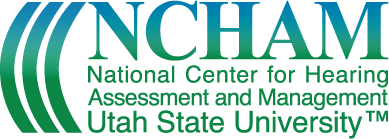Last Modified: 06/23/2023
VII. Evaluating Tele-Intervention Outcomes

Featured Articles/ Presentations
- Behl, D.D., Blaiser, K., Cook, G., Barrett, T., Callow-Heusser, C., Brooks, B.M., Dawson, P., Quigley, S., & White, K. (2017) A Multisite Study Evaluating the Benefits of Early Intervention via Telepractice Infants & Young Children, 30 (2), 147-161.
On This Page
- Outcomes of TI for Investigation
- Creating a Logic Model to Guide Evaluation
- Selecting Measurement Tools and Administration
- Recent TI Evaluations
Outcomes of TI for Investigation
As with any type of intervention, evaluating TI is critical to ensure that it is in fact resulting in the desired outcomes:
- Increased parent knowledge, skills/competence in fostering development, and satisfaction with services and providers, increased competence with technology
- Increased Child developmental/communication outcomes
- Improved parent-child interaction
Additionally, it is important to measure the impact of TI on the following additional outcomes that are associated with delivery of TI:
- Increased frequency and intensity of intervention
- Provider skills/competence in coaching
- Incorporation of natural routines
- Decreased costs, considering travel time, opportunity cost to providers as well as families
There are also factors that can influence outcomes that are important to capture:
- How much acoustic and visual clarity is needed in the technology used?
- Can the provider offer needed emotional support to families when needed via TI?
- Does TI work for various interventions?
- Are some parents/children a better fit?
- Are some “interveners” a better fit? An important place to start in evaluating the cost-effectiveness of TI is to develop a logic model.
- Do some internet connection options (i.e., wifi, wired connection, hotspots) work better in some areas?
Creating a Logic Model to Guide Evaluation
A logic model serves to guide the identification of measurement tools to answer questions such as those posed above. A logic model is a way to graphically depict the resources, actions, and expected results of an intervention. Here are some resources to guide develop of a logic model:
- The University of Wisconsin-Extension offers useful examples and guidance for developing logic models
- W.K. Kellogg Foundation
- Learning for Sustainability
Download an example of a logic model developed by NCHAM [PDF]
Selecting Measurement Tools and Administration
A logic model serves to guide the identification of tools to measure outcomes. The table below corresponds with the NCHAM logic model, delineating the constructs to be measured, the tools to be used, and the frequency of data collection. Creating an outline such as the one provided below is important in creating your evaluation plan. Creating such a table helps ensure that your evaluation plan is comprehensive but also practical in regard to your capacity to employ all the measurement activities.
Recent TI Evaluations
Several studies to measure actual differences between services provided by tele-intervention and face-to-face home visits have been conducted with families who have children who are DHH, and there are relevant studies of TI conducted with other EI populations. Here is a literature review of recent publications that support the use of TI as a cost-effective, family-centered approach to delivering EI services:
Featured Articles/ Presentations
Read about the latest research about tele-intervention for families of infants and toddlers with disabilities:
- Behl, D.D., Blaiser, K., Cook, G., Barrett, T., Callow-Heusser, C., Brooks, B.M., Dawson, P., Quigley, S., & White, K. (2017) A Multisite Study Evaluating the Benefits of Early Intervention via Telepractice Infants & Young Children, 30 (2), 147-161.
- Measuring Costs and Outcomes of Tele-Intervention When Serving Families of Children who are Deaf/Hard-of-Hearing [PDF]
- TI Assessment Practices for Children who are D/HH: Results from a participant survey [PDF]
- Constantinescu, G. (2012) Satisfaction with telemedicine for teaching listening and spoken language to children with hearing loss [PDF]. Journal of Telemedicine and Telecare 2012; 18: 267–272.
- Baharav, E., Reiser, C. (2010) Using Telepractice in parent training in early autism. Telemedicine and e-Health v.16 (6) 727-731.
- Cason, J. (2011) Telerehabilitation: An adjunct service delivery model for early intervention services [PDF]. International Journal of Telerehabilitation.v. v3 (1) 19-28.
- Kelso, G.L, Fiechtl, B.J., Olsen, S.T., Rule, S. (2009). The feasibility of virtual home visits to provide early intervention. Infants and Young Children, v.22 (4) 332-340.
- Mashima, P.A., Doarn, C.R. (2008). Overview of Telehealth Activities in Speech–Language Pathology [PDF]. Telemedicine and e-Health v.14 (10) 1101-1117.
- McCarthy, M., Munoz, K., White, K.R. (2010). Teleintervention for infants and young children who are deaf or hard-of-hearing. Pediatrics. 126 Suppl 1:S52-8.


